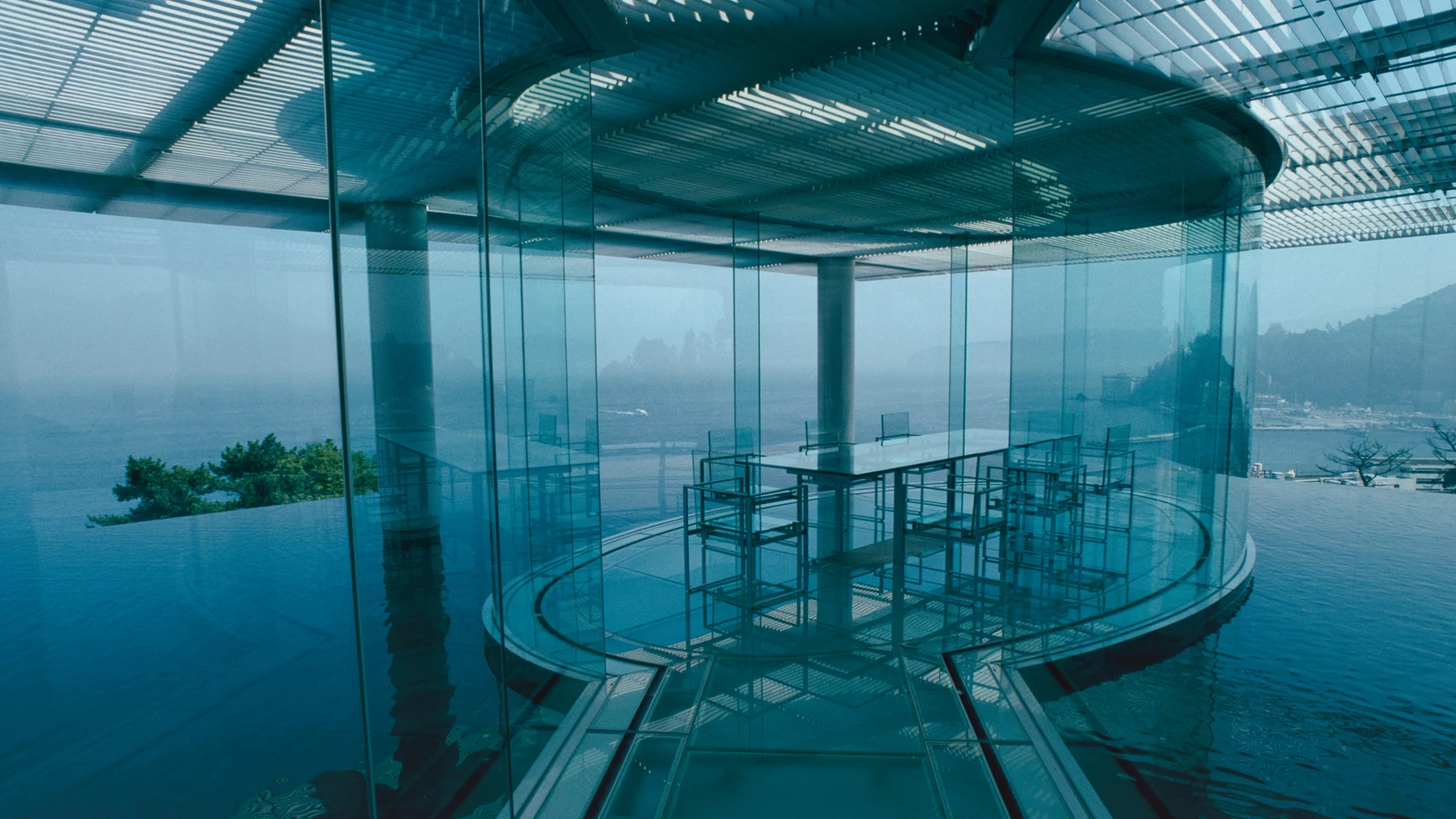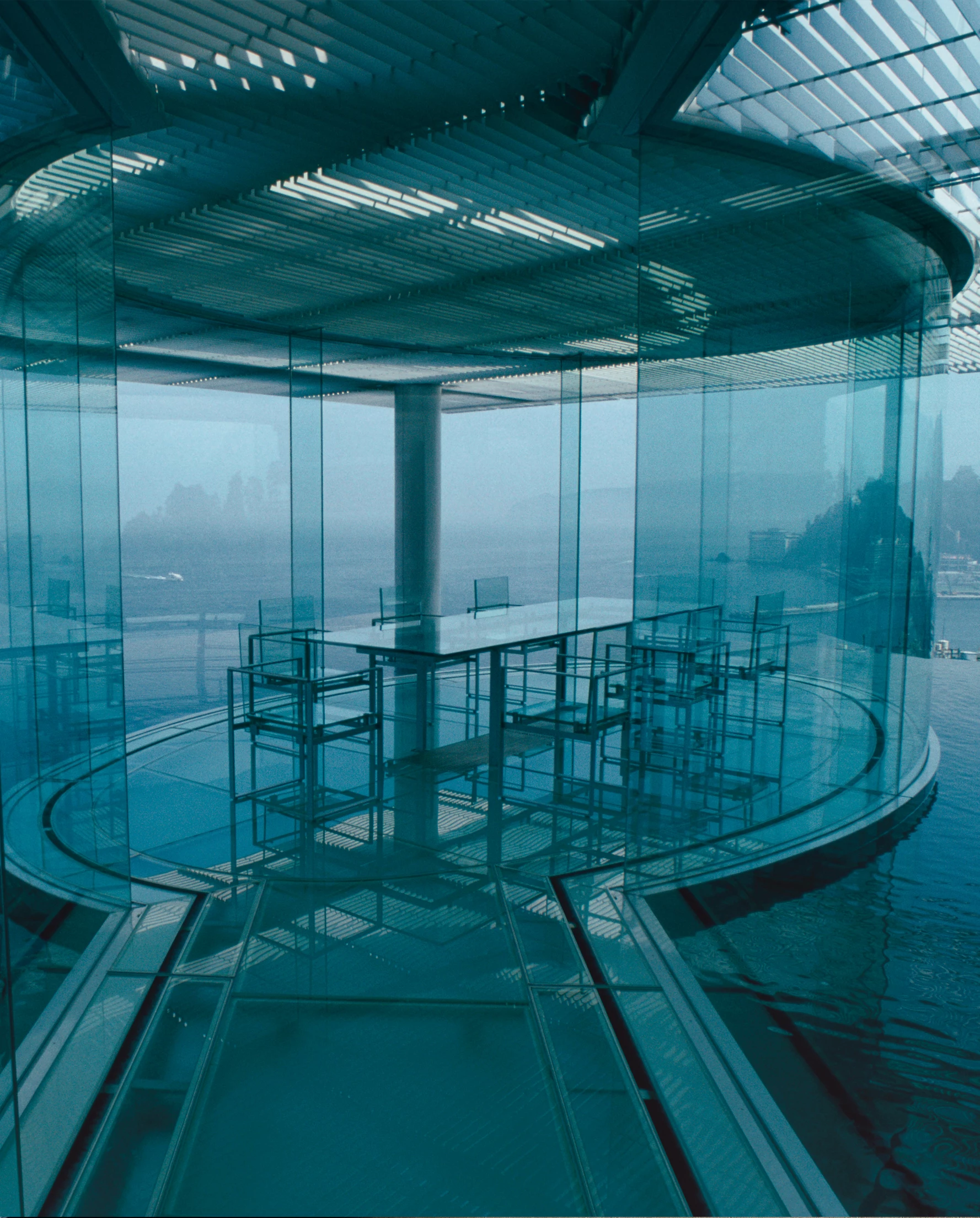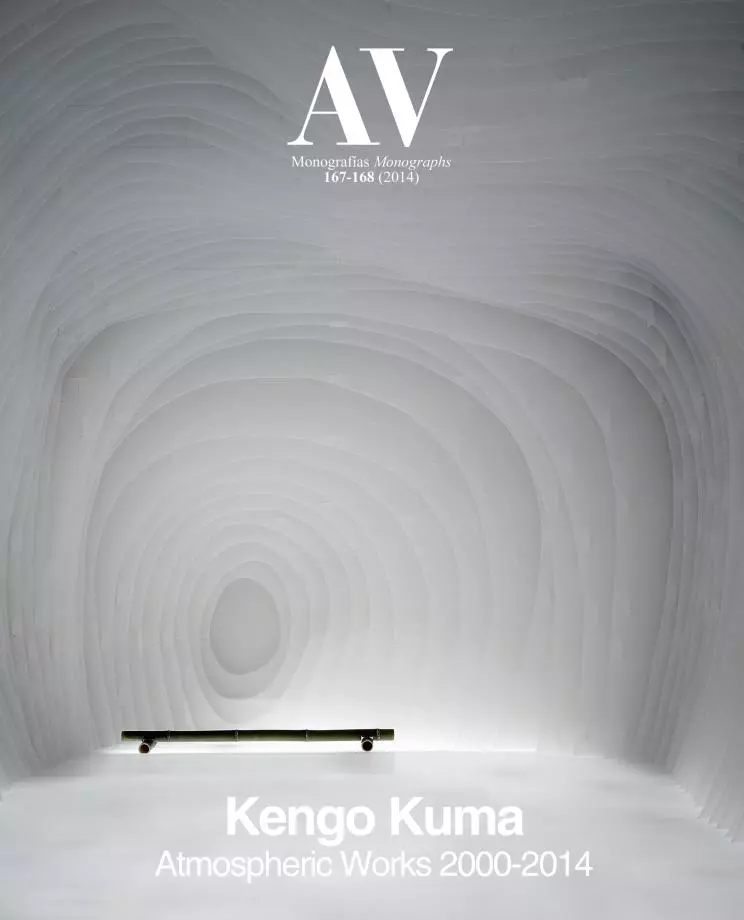Water/Glass Villa
Kengo Kuma- Type Hotel
- Material Glass
- City Shizuoka
- Country Japan
- Photograph Fujitsuka Mitsumasa
Considered as a turning point in Kuma’s way of designing, this guest pavilion located in Atami offers a reinterpretation of Katsura Palace, a masterpiece of traditional sukiya architecture, and was influenced greatly by the Hyuga Villa, the only project which Bruno Taut had left in Japan. The Water/Glass Villa is conceived as a tribute to the German architect, who tried to break the limitations of western architecture, incorporating elements from the vocabulary of traditional Japanese architecture. As much the glass pavilion as the Hyuga House located a few meters away reflect the same relationship with the place, both are located on the edge of a precipice, and are barely visible from the exterior. The relationship between the subject and the environment is challenged in various manners by re-defining and re-shaping the Katsura philosophy, yet always maintaining its fundamental essence. In this way, the traditional elements are reinterpreted with contemporary materials and techniques: the deep eaves are replaced with stainless steel slats and the engawa is translated into a reflecting, shallow pond. The pond’s water always overflows, so the glass pavilion seems to float over the Pacific Ocean, which appears far away.
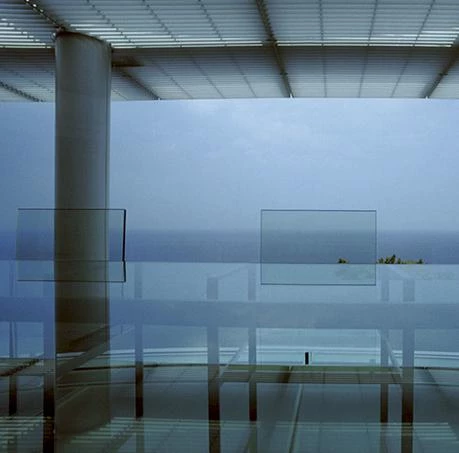
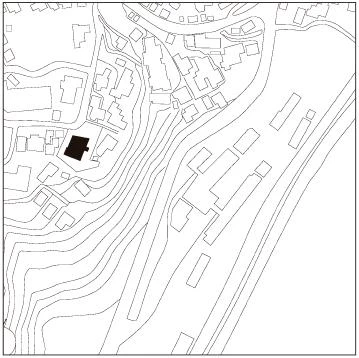
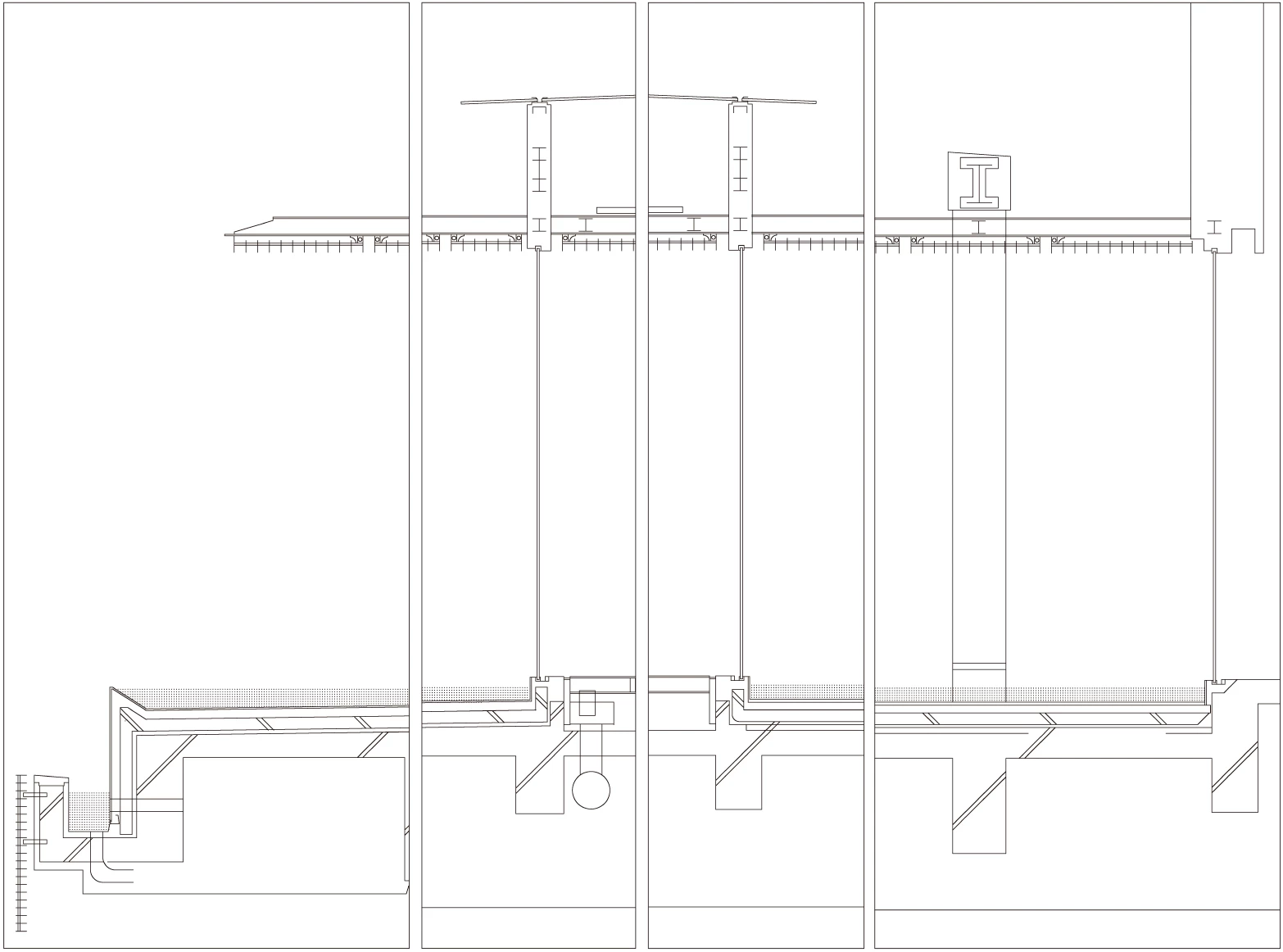
Arquitecto Architect
Kengo Kuma & Associates
Colaboradores Collaborators
K. Nakata & Associates (estructura structural engineering); Kawaguchi Engineering Consultant (instalaciones mechanical engineering)
Contratista Contractor
Takenaka Corporation
Fotos Photos
Mitsumasa Fujitsuka

